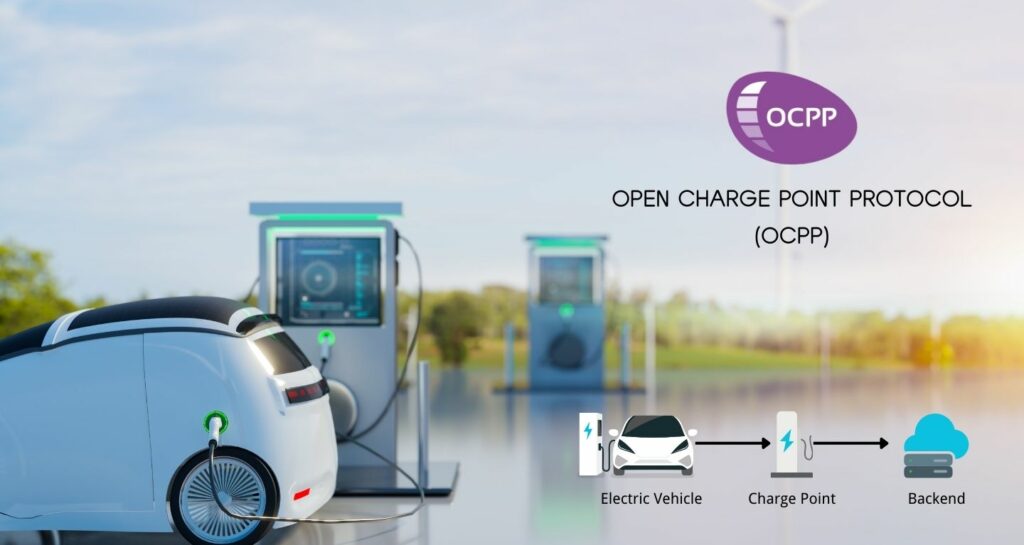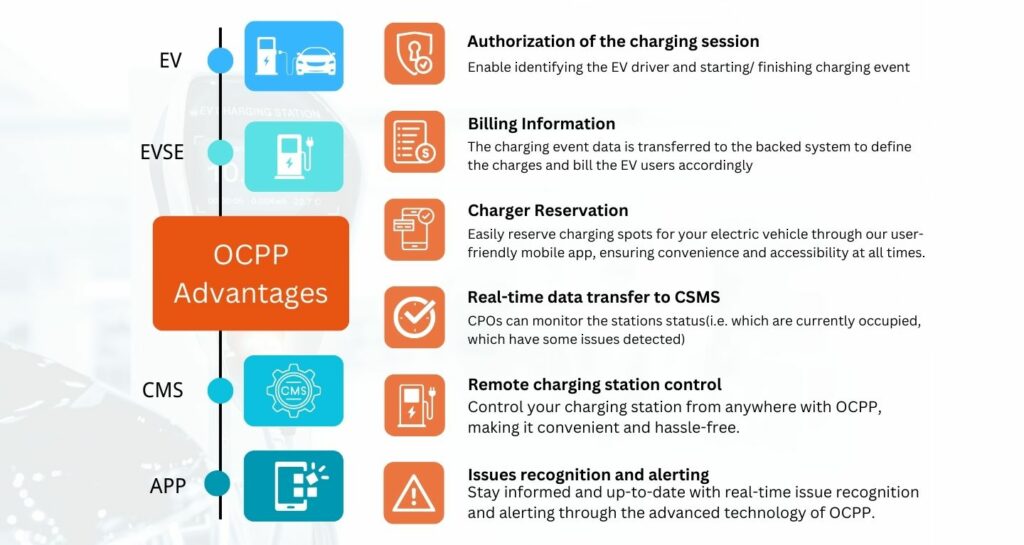Introduction to OCPP (Open Charge Point Protocol)
Revolutionizing the way we power our vehicles, electric vehicles (EVs) have taken center stage in the global sustainability movement. As more and more people make the switch to EVs, it is crucial to ensure a seamless and efficient charging experience for users. This is where OCPP comes into play.
Have you ever wondered how your electric vehicle charger communicates with management systems? Look no further than OCPP – the Open Charge Point Protocol. In this blog post, we will demystify OCPP and explore its significance in establishing effective communication between EV chargers and management systems.

The Importance of OCPP in EV Charging Infrastructure
One of the key reasons why OCPP is so important is that it allows for seamless communication between different brands and models of EV chargers and management systems. It ensures interoperability, meaning that regardless of the charger brand or model, they can all communicate effectively with the management system. This eliminates any compatibility issues and simplifies the process for both operators and users.
Another significant advantage of using OCPP is its ability to provide real-time data monitoring and control capabilities. With this protocol, charging station operators can remotely monitor various parameters such as energy consumption, charging status, and billing information. They can also adjust charging rates or schedules based on demand or specific requirements.
Furthermore, OCPP enables advanced functionalities like load balancing among multiple chargers at a location. This helps optimize energy distribution across different stations while ensuring an efficient use of available resources.
Additionally, by implementing OCPP in an EV charging infrastructure, businesses gain more flexibility when choosing their hardware providers. They are not limited to a single vendor but have a wider range of options to choose from without sacrificing connectivity or functionality.

Case Studies of Successful Implementation
Implementing the Open Charge Point Protocol (OCPP) in EV charging infrastructure has proven to be a game-changer for many companies. Let’s take a look at some real-life case studies that demonstrate the successful implementation of OCPP.
One notable example is ABC Energy, a leading provider of electric vehicle charging solutions. They decided to adopt OCPP in their management system and saw remarkable results. By integrating OCPP into their network of chargers, they were able to achieve seamless communication between their chargers and management systems. This allowed them to monitor and control their charging stations remotely, resulting in improved efficiency and customer satisfaction.
Another success story comes from XYZ Charging Solutions, an innovative company focused on smart energy solutions. They implemented OCPP across their entire network of charging stations, enabling them to offer advanced features such as dynamic load balancing and demand response capabilities. This not only optimized the utilization of available power but also contributed to grid stability during peak periods.
In both these cases, the adoption of OCPP brought significant benefits for these companies and showcased its effectiveness in creating a robust EV charging infrastructure.
These are just two examples among many others where businesses have successfully implemented OCPP protocols into their EV charging systems. As more organizations recognize its value, we can expect even greater advancements in this field.

Common Misconceptions and Myths about OCPP
There are several misconceptions and myths surrounding the Open Charge Point Protocol (OCPP) that need to be addressed. One common misconception is that OCPP is only suitable for large-scale EV charging infrastructure. This is not true. OCPP can be implemented in charging stations of any size, from a single charger at a home to an entire network of chargers across a city.
Another myth is that implementing OCPP in your EV charging system will be complicated and expensive. In reality, integrating OCPP into existing charging infrastructure can be relatively straightforward, especially with the help of experienced software providers who specialize in this technology.
Some people also believe that using OCPP will limit their choice of hardware and software vendors. This couldn’t be further from the truth. OCPP is an open standard protocol, which means it allows for interoperability between different manufacturers’ equipment and management systems.
One misconception that often arises is that using OCPP will result in slower communication between EV chargers and management systems. On the contrary, one of the advantages of using OCPP is its ability to facilitate fast and reliable communication between these components.
There’s a myth that implementing OCPP requires extensive technical knowledge or expertise. While some level of technical understanding may be helpful during the implementation process, many software providers offer user-friendly interfaces and support services to guide users through the setup.
How to Implement OCPP in Your EV Charging System
Implementing the Open Charge Point Protocol (OCPP) in your EV charging system is a crucial step towards achieving seamless communication between your chargers and management systems. Here are some key steps to follow when integrating OCPP into your infrastructure:
1. Choose an OCPP-compliant charging station: Select a charging station that supports the latest version of OCPP, ensuring compatibility and future-proofing for updates.
2. Install necessary hardware and software: Set up the required hardware components such as charge points, meters, and communication modules. Additionally, install the relevant software applications needed to enable OCPP functionality.
3. Configure connection parameters: Establish the necessary network connections between your charging stations and central management system using Ethernet or cellular networks.
4. Customize settings: Tailor specific configurations according to your unique requirements, such as pricing models, access control policies, and reporting mechanisms.
5. Test integration and interoperability: Conduct thorough testing to ensure smooth data exchange between different elements of your EV charging ecosystem.
6. Monitor performance: Continuously monitor system performance using advanced monitoring tools that provide real-time insights into operational metrics like energy consumption, utilization rates, and revenue generation.
By following these implementation guidelines diligently, you can leverage the power of OCPP to create a robust EV charging infrastructure that offers enhanced user experiences while streamlining operations for efficient fleet management or public charging networks.






